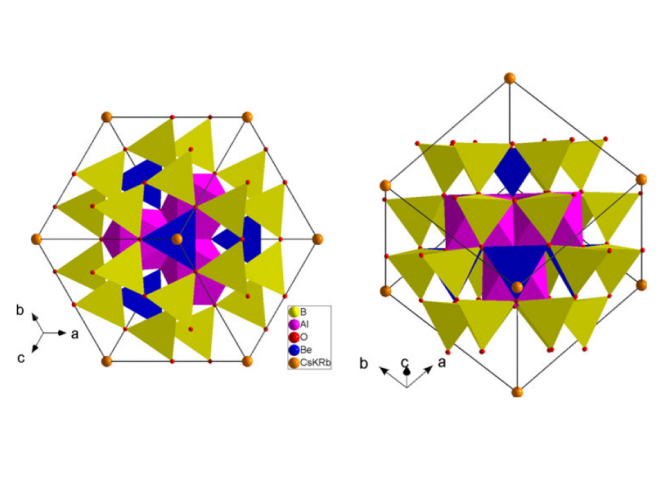“Stability of (Cs, K)Al(4)Be(5)B(11)O(28) (londonite) at high pressure and high temperature: a potential neutron absorber material”
- Authors
G.D. Gatta, P. Vignola, Y. Lee
- Journal
Physics and Chemistry of Minerals
Vol.38(6), pp.429-434, 2011.06 - DOI
Abstract
The stability and the thermo-elastic behaviour of a natural londonite has been investigated up to 1,273(3) K (at 0.0001 GPa) and up to 4.85(5) GPa (at 298 K) by means of in situ X-ray powder diffraction. Up to 973 K, no evidence of phase transition or anomalous thermo-elastic behaviour was observed. At T > 973 K, londonite shows the first evidence of an irreversible structure destabilisation. The volume thermal expansion coefficient between 298 and 973 K is α0 = 2.38(6)·10-5 K-1. Londonite shows an elastic behaviour up to 4.85 GPa. No phase transition has been observed within the pressure range investigated. P-V data fitted with a second-order Birch-Murnaghan equation of state give V0 = 389.1(1)Å3 and KT0 = 280(12) GPa. On the basis of the good thermo-elastic behaviour, substantiated by the significantly low compressibility, the modest thermal expansion up to 1,000 K and the significantly high amount of boron (B2O3 ~ 50wt%), londonite-type materials could be considered as potential inorganic host for 10B in composite neutron-absorbing materials.












